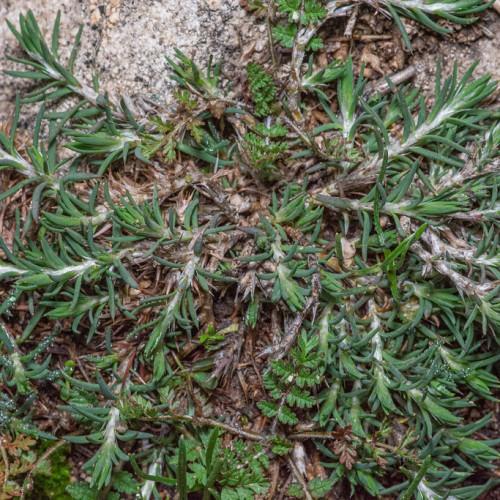
Sandmat
Cardionema ramosissimum
Watering:
Frequent
Hardiness Zone:
Sun:
full sun,part shade
Growth Rate:
Low
Drought Tolerant:
Yes
Salt Tolerant:
Yes
Invasive:
Yes
Care Level:
Medium
watering
Sandmat should be watered every 4 to 7 days depending on the amount of sunlight and warmth to which it is exposed. To avoid overwatering, it is recommended to check the soil before watering and wait until the top 2 inches of soil feels dry. During hot and dry periods, the plant may require more water, but during cooler and wetter months it may need less. When watering, ensure that the entire root mass is saturated, and avoid getting the foliage wet. If necessary, water in the morning so the leaves have time to dry before the cooler night temperatures set in. If the plant is in a container, it may be necessary to water more frequently.
sunlight
Sandmat, also known as Cardionema ramosissimum, is a drought-tolerant ground cover plant that does best with several hours of direct sunlight each day. During the summer months, Sandmat should receive at least 6 to 8 hours of direct sunlight each day to ensure healthy growth and vibrancy. In areas of high heat, Sandmat may need additional protection or afternoon shade to avoid wilting or damage from the hottest hours of the day. During spring and autumn months, Sandmat should receive at least 5 hours of direct sunlight each day. In cooler winter months, Sandmat should still receive at least 3 hours of direct sunlight each day for healthy growth.
pruning
Sandmat should be pruned in late winter or early spring, before new growth begins. Pruning should be done lightly, leaving the stems of the plant at least 5 cm tall and maintaining the overall structure of the plant. This will minimize stress on the plant and promote healthy growth. When pruning, it is important to cut at a 45-degree angle and slightly above a node or junction. This will ensure that the cutting wounds quickly heal and the plant can regenerate without any further damage.
